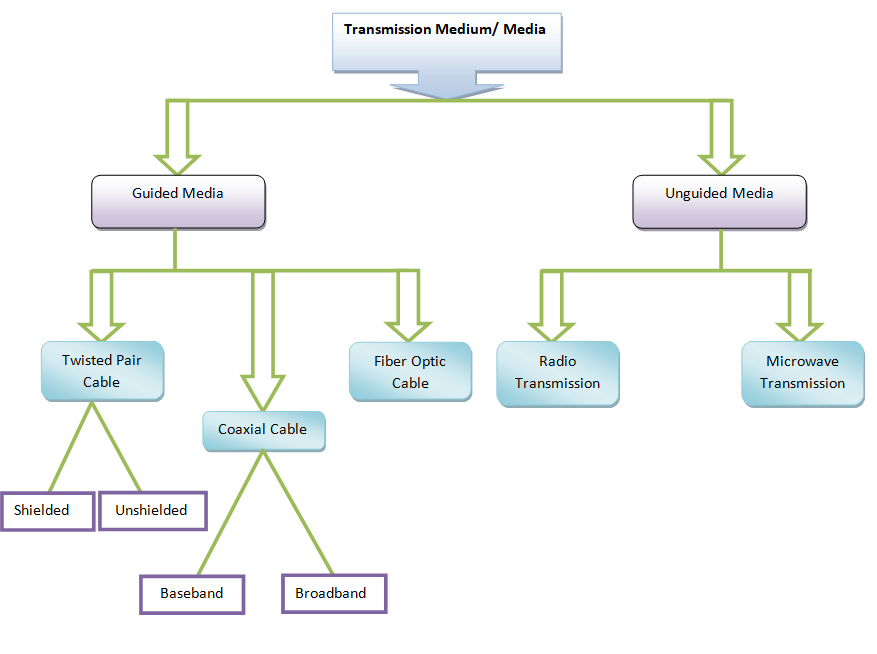25 Aug Transmission Media in Computer Networks
Signal is used to represent data, by computer and telecommunication devices. Signals are transmitted in the form of electromagnetic energy. These electromagnetic signals travel through transmission media.
For transmission from sender to receiver, different media can be used. The medium available differ from each other in terms of bandwidth, cost, ease of handling, installation, maintenance, etc. These transmission mediums are in the form of Guided media as well as Unguided Media. Guided is wired transmission, whereas unguided is wireless transmission.
The following parameters should be taken into consideration while selecting Transmission Medium:
Speed
- Cost
- Electromagnetic Interface
- Attenuation
- Security
- Ease of Handling
- Maintenance
- Security
Here are the types of Transmission Mediums:

In the next lesson, we will learn about Guided Transmission Media and Unguided Transmission Media, with examples, figure and its sub-types.
If you liked the tutorial, spread the word and share the link and our website Studyopedia with others.
For Videos, Join Our YouTube Channel: Join Now


No Comments